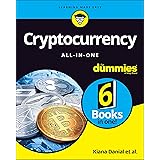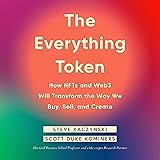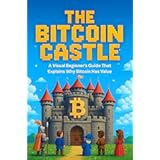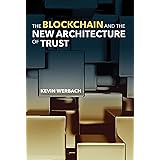Navigating the World of Cryptocurrency Investing for Beginners in the Philippines
In today’s rapidly evolving financial landscape, understanding innovative investment opportunities is crucial. The accompanying video offers a fantastic introduction to the world of cryptocurrencies, blockchain technology, and Bitcoin, especially for students and beginners in the Philippines. It lays a solid foundation for why one might consider investing in this dynamic sector, emphasizing the importance of education and responsible practices.
Many find the concept of crypto overwhelming at first glance. Terms like “blockchain,” “decentralization,” and “altcoins” can seem daunting. However, by breaking down these complex ideas, we can appreciate the potential they hold. This article will expand on the video’s insights, providing a deeper dive into these topics to help you navigate your initial steps into cryptocurrency investing with greater confidence and knowledge.
Understanding the “Why” Behind Crypto Investing
Before diving into any investment, it’s essential to understand your motivations. The video highlights that investing in cryptocurrencies can serve two primary purposes: fostering continuous learning about this transformative technology and exposing a small portion of one’s portfolio to significant potential gains. This dual approach emphasizes both intellectual growth and strategic financial positioning.
Beyond personal learning, many investors are drawn to crypto as a potential hedge against traditional financial system challenges. Fiat currencies, like the Philippine Peso, are subject to government control and inflation. Over time, their purchasing power can erode. Cryptocurrencies, particularly those with a fixed supply like Bitcoin, offer a different value proposition, potentially preserving wealth more effectively in the long run.
From Barter to Bitcoin: What is Money?
To truly grasp Bitcoin’s value, it’s vital to understand the fundamental nature of money itself. Historically, societies moved from simple bartering to using various objects as a medium of exchange and a store of value. Shells, livestock, and even large Rai stones served this purpose in different cultures, facilitating trade by providing a commonly accepted unit of value.
Modern money, or fiat currency, operates differently. Its value is derived from government decree and public trust, not from an inherent physical commodity. Governments can print more money, which, while useful for economic stimulus, can also lead to inflation. This inflation diminishes the value of existing money, making it harder for individuals to maintain their wealth over time. This vulnerability underscores a key argument for decentralized digital assets like Bitcoin.
Unpacking Blockchain Technology: The Core Innovation
The true genius behind Bitcoin, and indeed most cryptocurrencies, lies in blockchain technology. The video explains blockchain as a decentralized ledger, a concept that is revolutionary. In traditional systems, institutions like banks or online marketplaces act as trusted intermediaries, maintaining centralized ledgers of all transactions.
Blockchain removes the need for these intermediaries. Instead of a single entity controlling the ledger, a network of computers worldwide collectively manages and verifies it. Every transaction, once validated by this network, is added as a “block” to a growing “chain” of data. This creates an immutable, transparent, and highly secure record. No single party can alter past transactions, ensuring the integrity of the entire system.
This decentralized and immutable nature offers numerous advantages. It fosters trust among strangers without relying on a central authority. It also opens doors for innovative applications beyond finance. Imagine secure, tamper-proof records for healthcare data, supply chain management, or even digital identity. The potential for blockchain to transform various industries is immense, extending far beyond its initial application in digital currency.
Bitcoin: Digital Gold and Decentralized Money
Bitcoin was the first successful application of blockchain technology to money, conceived by the enigmatic Satoshi Nakamoto in 2008. Its core innovation is creating a form of digital money that is truly decentralized. Unlike fiat currency, no government or central bank controls Bitcoin’s supply or flow.
The scarcity of Bitcoin is a key driver of its value, mirroring the appeal of precious metals like gold. Bitcoin is programmatically capped at 21 million coins. New Bitcoins are introduced into circulation through a process called “mining,” where powerful computers solve complex algorithms to verify transactions. As the video details, a fixed number of new Bitcoins (currently 6.25 BTC) are created approximately every ten minutes as a “block reward.”
Furthermore, the “halving” event, occurring roughly every four years (or every 210,000 blocks), reduces this block reward by half. This mechanism ensures a predictable, diminishing supply of new Bitcoin, making it increasingly scarce over time. This programmed scarcity, coupled with its decentralized nature, underpins Bitcoin’s growing reputation as “digital gold,” a resilient store of value in the digital age.
Beyond Bitcoin: Exploring Altcoins and Their Potential
While Bitcoin pioneered the cryptocurrency space, it’s just one of many digital assets. The term “altcoin” refers to any cryptocurrency other than Bitcoin. Ethereum, for instance, is a prominent altcoin that the video briefly mentions. However, Ethereum isn’t just digital money; it’s a decentralized platform designed for creating smart contracts and decentralized applications (DApps).
Ether (ETH), Ethereum’s native token, powers transactions and computations on this network. Investing in Ether means investing in the potential of the Ethereum ecosystem, which hosts a vast array of projects from decentralized finance (DeFi) to non-fungible tokens (NFTs). Many other altcoins are built with diverse purposes, aiming to solve specific problems or offer unique functionalities.
However, the altcoin market is vast and varied, ranging from innovative projects with solid fundamentals to speculative ventures. It is crucial to conduct thorough due diligence, reading whitepapers and understanding the project’s goals, team, and technology. The crypto boom of 2017 saw many projects raise capital through Initial Coin Offerings (ICOs), with many failing or disappearing. Therefore, discerning credible projects from mere hype is vital for any serious investor.
Navigating the Risks: Responsible Crypto Investing
The allure of significant gains in the crypto market is undeniable, but it comes with equally significant risks. As the video wisely cautions, cryptocurrency is a highly volatile asset. Prices can swing dramatically in short periods, leading to both rapid profits and substantial losses. The golden rule of investing—”only invest what you can afford to lose”—is particularly relevant here.
Beyond market volatility, the prevalence of scams is a serious concern, especially in emerging markets like the Philippines. The video highlights “Forsage” as a notorious example of a crypto pyramid scheme, a DApp built on the Ethereum network designed to enrich early participants at the expense of later ones. These predatory schemes often promise unrealistic “get-rich-quick” returns with no actual product or service, preying on desperation and lack of knowledge.
Education is your best defense against such scams. Always be skeptical of promises that seem too good to be true. Understand that legitimate investing involves inherent risks and rarely offers instant, guaranteed riches. Proper risk management, thorough research, and a clear understanding of the project’s fundamentals are indispensable tools for responsible crypto investing.
Starting Your Crypto Journey in the Philippines
For those in the Philippines looking to begin their cryptocurrency investing journey, accessing the market involves using a local exchange. These platforms facilitate the conversion of Philippine Pesos into various cryptocurrencies. As mentioned in the video, PDAX is a local cryptocurrency exchange that allows users to buy and sell digital assets.
Such exchanges provide a bridge between traditional banking and the decentralized world of crypto. They offer user-friendly interfaces, local payment options, and regulatory compliance within the country. When choosing an exchange, consider factors like security, fees, available cryptocurrencies, and customer support. Always ensure the platform is reputable and compliant with local financial regulations to safeguard your investments.
As you embark on this journey, remember that learning is an ongoing process. The cryptocurrency space is constantly evolving, with new technologies and projects emerging regularly. Staying informed, practicing sound risk management, and diversifying your portfolio, even within crypto, can help you navigate this exciting and challenging landscape effectively. The potential for blockchain technology to impact our lives is significant, making it an area worth exploring for every informed investor.







